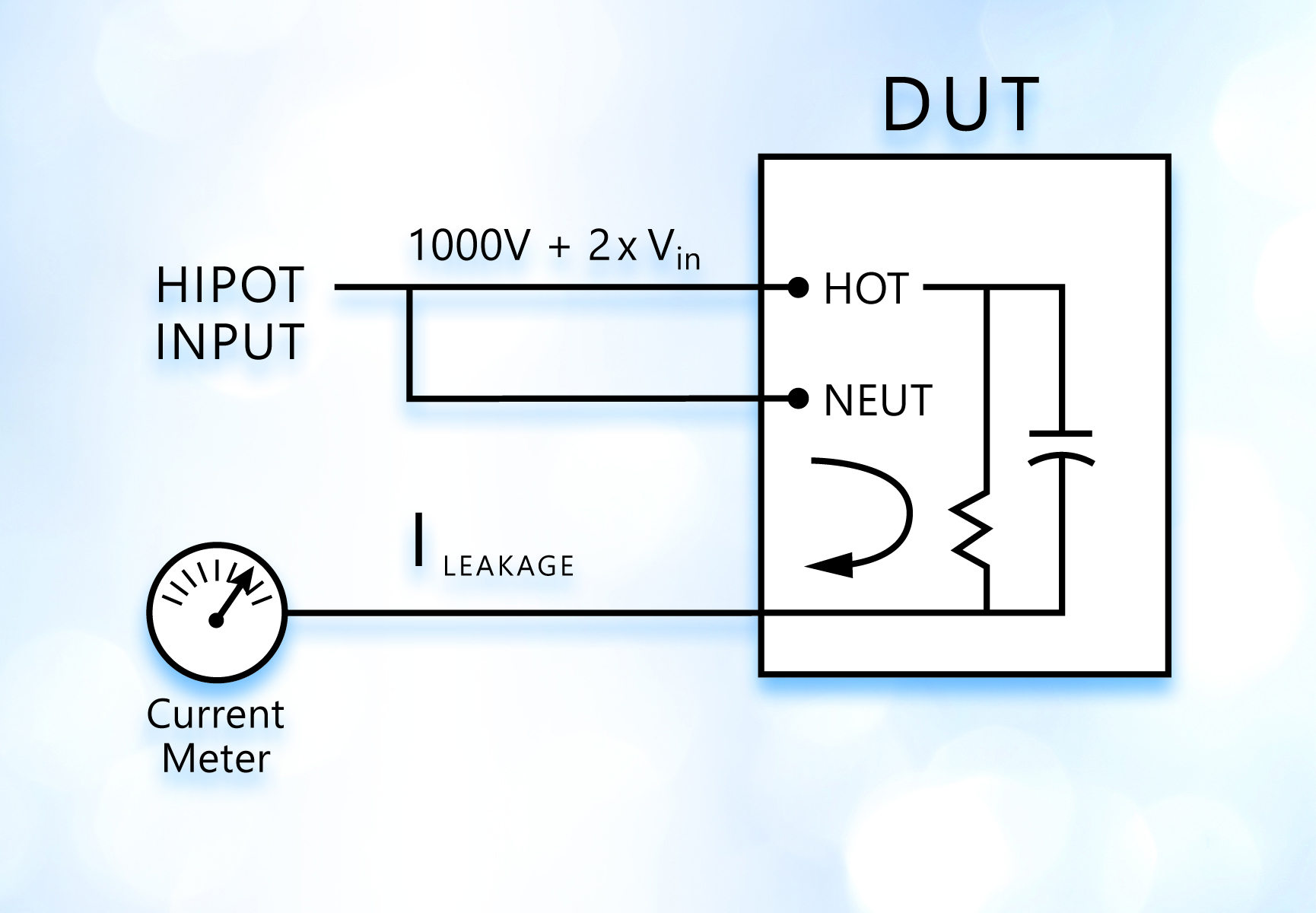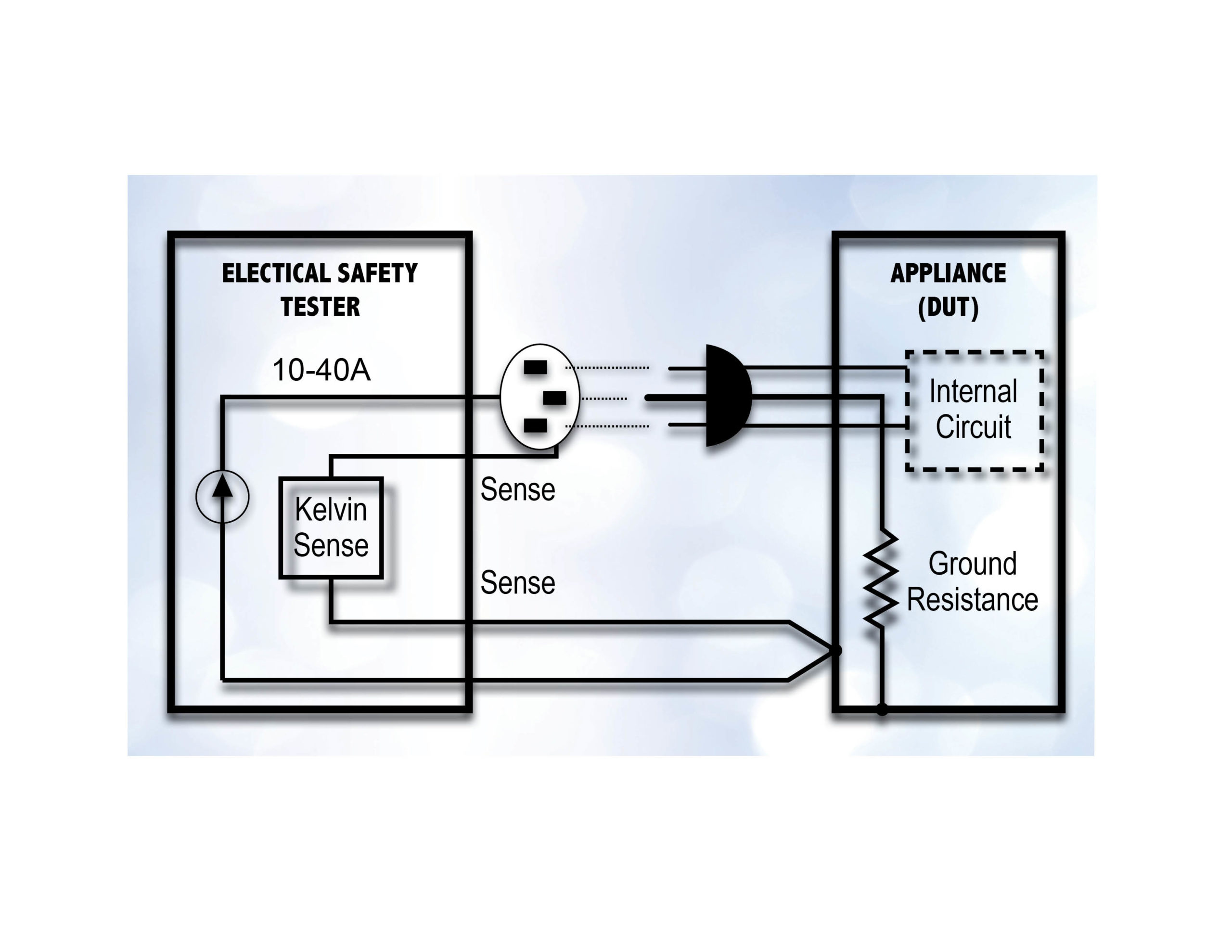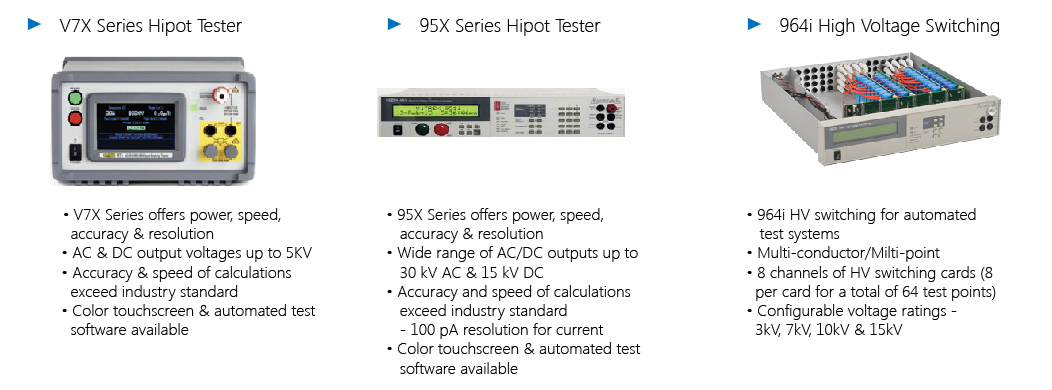Introduction
Electrical appliances, computers and peripherals, power tools and other devices found in the home and office environments must be tested to confirm adherence to a plethora of stringent certification standards.
The vast array of consumer devices for the home and office — from blenders and ovens to computers and high-definition LED TVs — are becoming increasingly sophisticated. Refrigerators, once basic electrical appliances, now often include adjustable speed motor controls, digital displays and Bluetooth communications.
While the complexity and functionality found in this class of devices varies extensively, there is one thing they all have in common when products enter the market: proven safety compliance. It is a foregone expectation that electrical and electronic devices designed for consumer environments will have been tested and labeled as compliant according to applicable safety standards, which means bearing the mark of a Nationally Recognized Testing Agency (NRTL). Depending on where in the world the product will be operating, the labeling could have one or many of those listed in Figure 1.
 Figure 1. A sampling of NRTL product labeling certifying consumer product safety compliance.
Figure 1. A sampling of NRTL product labeling certifying consumer product safety compliance.
Compliance Considerations
Compliance with the applicable safety standards, which can vary widely from country to country, typically involves both mechanical and electrical safety considerations. Manufacturers must either submit samples of their products to an NRTL for testing or secure the authorization to conduct the tests themselves.
The certification process is conducted to confirm compliance with the relevant standard(s). This compliance evaluation investigates two key areas:
• Construction — mechanical construction, spacing, clearances, etc.; and
• Safety — to ensure safe operation (even under high-stress conditions)
The following list (Table 1) outlines the details typically required in the certification process. Many of these criteria (as noted in blue type) are confirmed by using electrical safety (hipot) testing devices.
Table 1. Criteria for Product Certification
• Marking and Instructions
• Protection against access to live parts
• Starting of motor-operated appliances
• Power input and current
• Heating
• Leakage Current
• Creepage distances, clearances and distances through insulation
• Moisture Resistance
• Provision for earthing
• Overload protection of transformers and associated circuits
• Terminals for external conductors, screws and connectors
• Radiation, toxicity and similar hazards
• Mechanical strength & construction
• Supply connection & external flexible cords
• Internal wiring
• Recognized components
Table 1. Criteria for product certification with blue text indicates where hipot testing is required.
Safety Standards
The details of what constitutes a certified product is dependent upon hundreds of safety standards and the region of the world where the device will be sold and used. Fortunately, work is being done to harmonize this daunting number of international standards. For example, a recent article entitled “UL 60335-1” explained, “Safety of Household and Similar Electrical Appliances,” points out the nearly identical counterpart in The European IEC 60335-1 standard. Here is how this harmonization is described:
-
In North America, IEC 60335-1 has been used as the basis for a tri-national standard between the United States (UL 60335-1), Canada (Can/CSA C22.2 No. 60335-1), and Mexico (NMX-J-521/1-ANCE). In the US, UL 60335-1, which is in it’s 6th edition, is harmonized to IEC 60335-1 as part of its participation in the HOUS (Household and Other Similar Equipment) category of the IECEE (IEC Electrical & Electronics Equipment).
-
In Europe, the harmonized standard is EN 60335-1 and defines how appliances may comply with European Directives, such as the low voltage directive. Unlike the United States, the EU recognizes most, if not all, of the 100+ part 2 standards related to specific products.
Product Classification
For purposes of this paper, the harmonized UL/IEC standards will be used to categorize various classes of consumer apparatus.
-
Class 0 — Products are provided with basic insulation only as a provision for basic protection and have no provisions for fault protection. Due to the limited safety features, their application is limited to areas that are physically protected from the public with fences or other measures that restrict access.
-
Class I — Products have basic insulation and must incorporate a protective earth (ground) connection to mitigate the risk of electric shock.
-
Class II – Products feature additional safety precautions such as double insulation or reinforced insulation thereby eliminating the need for a protective earth (ground) connection. Therefore, Class II input power supplies must have a 2-pin input receptacle instead of the 3-pin input receptacles found on Class I input models.
-
Class III – Products are designed to be supplied from a separated extra-low voltage power source. The voltage from a SELV supply is low enough that under normal conditions a person can safely come into contact with it without the risk of electrical shock.
Types of Tests Required
The 964i is easily configured to a wide range of specific test and measurement requirements.
-
Select from 4 different voltage ratings – 3KV, 7KV, 10KV and 15KV.
-
Determine the number of and type of cards needed based on the number of test pairs. For each card, define if it will be used as the + (HV bus) or – (return bus).
-
Select any desired accessories.
-
Draw the desired wiring diagram and email it to Vitrek’s application team. (This can be a hand drawing photographed and texted to us. We will create a custom configuration for you based on your drawing.)
-
Order or create custom fixtures as required.
Standard front inputs connected directly to the hipot tester outputs and up to 60 rear panel terminals connect to the DUT – typically utilizing test fixtures to speed setup and reduce chances of incorrect connections.
Figures 4 and 5 are examples of test accessories available from Vitrek.
Up to four 964i units can be controlled directly by a single Vitrek 95x or V7x series hipot tester or up to sixteen via PC/GPIB interface. The 964i’s LCD display confirms system status and switch activation at a glance. The result is a highly repeatable, rapid switching test system with no operator intervention and fully automated data acquisition.
Hipot Testing

Figure 2. Hipot is applied to both conductors and leakage is measured in return circuit through the ground connection.
Hipot is the short name for a high-potential (high-voltage) dielectric withstand test. A hipot test checks for sufficient insulation and isolation between line and neutral to ground. Hipot testing is one of the minimum-production tests of consumer products. Defects that are often detected with the hipot test include contamination (dirt, debris) and lack of proper spacing (creepage and clearance) of components. Contamination would likely cause an unacceptable level of leakage current. Clearance problems could result in breakdown.
Ground Continuity Testing

Figure 3. Ground continuity mesaures the resistance from the appliance’s ground pin to the chassis.
Ground continuity testing is performed to confirm that the conductive chassis of a device is safely connected to the earth ground pin on the power plug. This assures protection against shock hazards even if the equipment suffers an internal short to the chassis. The current would be shunted via the ground wire and would likely trip the breaker or blow the fuse. Ground continuity is performed by applying a low current (e.g. 50mA) and calculating the resistance from the ground pin on the power plug to selected locations on the exposed surfaces of the device under test, or DUT.
Ground Bond Testing
Where ground continuity measures the resistance of the safety ground connection, the ground bond test assures the integrity of the connection. Using the same test setup, a high current (up to 40A) is passed through the circuit. If the ground bond is solid, the current passes without a change in resistance. If weak, the resistive heating of the current would introduce a failure of the bond. This is one area where the IEC and UL specifications differ. The EU standard commonly includes ground bond testing while the UL standard does not.
Insulation Resistance Testing

Figure 4. An insulation resistance test: voltage is applied to one conductor at a time while adjacent conductors are bundled. Resistance is calculated based on leakage current.
Insulation resistance testing is likely to be required in motor winding, transformer winding and other applications
involving cabling or insulated wire. It typically involves confirming that the resistance exceeds a defined high-resistance value.
In many instances, insulation resistance needs to be measured between several conductors. Examples include cable/connector assemblies, multi-conductor cables and relays. To make this measurement, all the conductors except one are shorted together and the test voltage is applied from the remaining conductor across the bundled ones. Each wire is then, in turn, tested in this fashion. (Figure 4.)
Application of the IEC/UL Standard
As noted, IEC/UL 60335-1 is a standard covering both mechanical and electrical aspects of the product. The specific area of the standard related to electrical conditions is Section 16.3. Common requirements for these tests include:
-
Minimum output power rating of 500 VA
-
Test voltages:
-
1250VDC – Class 0 and Class I
-
1750VDC – Class II
-
-
Basic test sequence
-
Ramp up from 0 V to Test Voltage – 5 seconds
-
Dwell at Test Voltage – 60 seconds
-
The 60335-1 standard also has a specific section (Annex A) the prescribes specific test conditions and pass/fail criteria utilizing the common requirements listed previously.
-
Annex A – Hipot
-
Leakage Current:
-
<5 mA (standard)
-
<30 mA (high leakage equipment)
-
-
Annex B – Ground Bond/Continuity
-
-
Ground Bond Test Current 10 A
-
-
Ground Continuity Resistance
-
Plug connected – <200 mΩ
-
Hard-wired – <100mΩ
-
-
Vitrek Electrical Safety Testers
Vitrek is well equipped to provide the right equipment for every consumer product test, anywhere in the world. Here’s a quick summary of the Vitrek product offering:

Vitrek Application Examples
Vitrek is the preferred source for electrical safety testing utilized by world-class consumer product manufacturers including:

